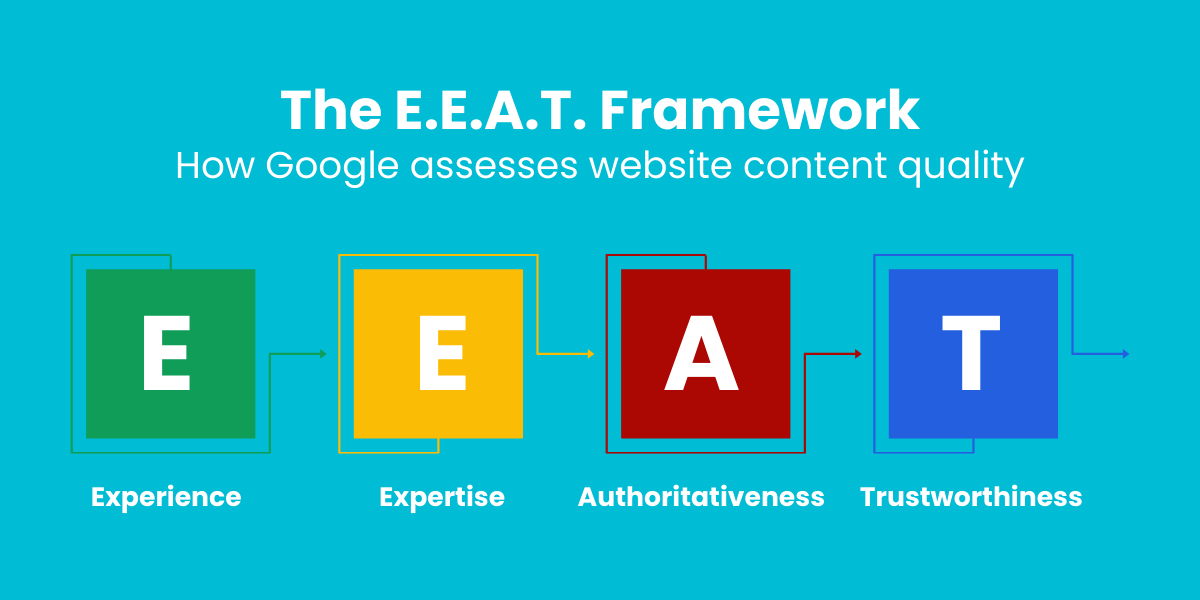If you are a financial services marketer, you know a strong online presence and digital marketing program will help you reach customers searching for financial services online. That’s where financial services SEO (search engine optimization) comes in. By optimizing your website for search engines, you can increase your visibility, rank higher in search results, improve lead generation, and ultimately grow your business.
But rising above the noise in the financial services industry is a real challenge. It’s no secret that having a robust online presence is crucial. But what sets apart a standout website is the implementation of an effective SEO strategy specifically designed for the financial services sector.
It’s time for financial institutions to modernize their approach! We’ll explore the ins and outs of financial services SEO, from content optimization to technical setup, to help you stand out from the competition and achieve results.
Table Of Contents:
- Financial Services SEO Strategies to Grow Awareness and Attract Customers
- 1. Conduct Thorough Keyword Research
- 2. Optimize On-Page SEO Elements
- 6. Build High-Quality Backlinks
- 7. Prioritize Mobile-Friendliness
- 8. Enhance User Experience (UX)
- Challenges in Financial Services SEO
- Conclusion
Financial Services SEO Strategies to Grow Awareness and Attract Customers
Add a spark to your company’s online efforts with these techniques specific to SEO for financial services, designed to establish your digital footprint and significantly increase your conversion rates.
1. Conduct Thorough Keyword Research
Revving up your financial services SEO starts with pinpointing the right keywords. Think “retirement planning”, “investment management”, or “tax preparation”.
Kickstart your research with tools like Google Keyword Planner, SEMrush , Ahrefs , or Moz Keyword Explorer . Analyze search volume and competition to find that sweet spot – decent volume, low competition. Long-tail keywords, like “best financial advisor for retirement planning”, offer a hack: less volume, less competition, easier ranking.
Here are some keyword research tips to help:
- Think like your target audience and use the language they would use when searching for your services.
- Look for keywords with high search volume but low competition to increase your chances of ranking well.
- Don’t forget to include local keywords if you serve a specific geographic area, such as “financial advisor in [city name]”.
- Use your chosen keywords naturally throughout your website’s content, including page titles, headings, and meta descriptions.
Thorough keyword research gives you a rock-solid SEO foundation. You’ll know exactly what to target in your content and marketing to attract qualified leads and boost business growth.
2. Optimize On-Page SEO Elements
Properly optimizing your website for search engines can lead to improved visibility and a spike in relevant traffic. To start, ensure your meta titles and descriptions are attention-grabbing, use header tags to structure your content, and subtly incorporate your target keywords. And don’t neglect your blog posts – which are ready to be tapped to drive organic traffic and solidify your financial institution brand as a trusted resource in the industry.
3. Ensure Technical SEO is Properly Implemented
When it comes to getting your website ready for search engines, you need to lay a solid foundation with technical SEO. This includes making sure your site loads quickly, is easy to navigate on mobile devices, and is properly indexed and crawlable. A properly optimized site will significantly improve the user experience and, as a result, boost your site’s visibility in search engine results.

4. Showcase Experience, Expertise, Authority, and Trustworthiness (E-E-A-T)
E-E-A-T is the foundation for Google’s quality rating guidelines.
Financial institutions must prioritize building trust with their audience by showcasing their subject matter expertise in the financial services industry. One effective way to achieve this is through the creation of in-depth content that proves their knowledge and experience. As a result, Google will be more likely to recognize their authority and visit them more frequently.
5. Develop High-Quality, Engaging Content
Financial companies looking to make a lasting impression with their customers should invest in a content marketing strategy that truly understands their unique needs and pain points. This means crafting a diverse range of content – from videos to whitepapers – that showcases their financial services and speaks directly to the concerns of their ideal customer.
Conduct a content audit of your existing site to identify gaps and opportunities for improvement. The key to effective financial services SEO is publishing high-quality content consistently that educates, informs, and builds trust with your audience while incorporating relevant keywords to drive organic traffic and generate leads.
Building a robust financial services SEO strategy can create a vault of keywords, establish your brand as a thought leader in the financial services industry, and unlock a treasure trove of leads and sales. Start by conducting thorough keyword research to optimize on-page elements that showcase your expertise, authority, and trustworthiness—raising the bar on your game.
6. Build High-Quality Backlinks
Backlinks are the gatekeepers of credibility. And quality links pointing from other websites to your site help to improve your website authority and ranking.
Don’t settle for mediocre links. Instead, focus on creating useful content that addresses real needs in your financial niche, such as a guide to saving money, an exploration of new investment strategies, or an analysis of industry trends. When you have something valuable to share, reach out to the right sites and influencers to spread the word.
Here are some ideas for building connections with other websites:
- Guest post on respected financial blogs.
- Participate in finance-related forums and discussions.
- Create useful tools or calculators related to your services.
Remember, the key is earning links naturally by providing genuine value. Avoid spammy tactics that could harm your financial services SEO efforts in the long run.
7. Prioritize Mobile-Friendliness
In today’s mobile-first world, having a mobile-friendly website is non-negotiable for financial services SEO success. Google now uses the mobile version of your site for indexing and ranking. If your site isn’t optimized for mobile, you could be missing out on valuable search visibility and traffic.
Ensure your website uses responsive design, meaning it automatically adjusts to fit the screen size of the device it’s being viewed on. Your content should be easily readable and navigable on smaller screens without the need for zooming or horizontal scrolling.
Having a mobile-friendly website isn’t just about providing a better user experience – it’s also crucial for search engines like Google. As the majority of internet users access the web through their smartphones, focusing on mobile-friendliness can significantly improve your financial services SEO rankings.
8. Enhance User Experience (UX)
If you want to create a standout user experience, focus on speed and simplicity. A website that loads quickly, has an intuitive layout, and works flawlessly across devices can make all the difference.
Create an environment where your customers feel at ease, especially when searching for sensitive financial information. Your financial services business will soar if you can harmonize your user experience with the subtle demands of your customers.
When your UX is on point, potential customers take notice. They click and stay, satisfied that they’ve found a reliable source of information that meets their aspirations and connects them in meaningful ways.
Challenges in Financial Services SEO
Regulatory Compliance, Security Concerns
Financial services companies face a major challenge: staying on the right side of regulatory compliance. Website content, in particular, must walk a fine line between effectively communicating the benefits of financial services and staying true to the facts.
Oversight is everything when it comes to creating content for the financial industry. Neglecting regulatory requirements can result in legal troubles and reputational harm, so implement robust compliance measures to ensure your SEO efforts meet the relevant standards and laws. These efforts should include:
- Appropriate cookie consent on your website.
- Updated privacy disclosures on your website.
- Adhering to WCAG website accessibility standards .
- Using correct legal disclosures on content, social posts, and images.
Craft a “hub-and-spoke” content strategy, where distinct content silos (hub) are broken down into in-depth subtopics (spokes), making it easier for search engines to crawl and understand your site’s structure and content, while providing a seamless user experience.
Conclusion
Financial services SEO is a powerful tool that can help you attract more clients, generate more leads, and ultimately grow your business. By implementing the strategies we’ve discussed in this article, you can improve your search engine rankings, increase your online visibility, and establish yourself as a trusted authority in the financial services industry.
As you strive to stay ahead in the financial services industry, remember that SEO is a continuous process. It’s essential to keep pace with the latest developments in search engine algorithms and consumer behavior, adapting your strategies accordingly.
By investing in SEO and making it a priority for your financial services company, you can create a sustainable, long-term marketing strategy that drives results. So, don’t wait any longer to start optimizing your website and content for search engines. The sooner you begin, the sooner you’ll start seeing the benefits of increased traffic, leads, and revenue.
The window of opportunity for financial services companies to elevate their online presence is now. Partner with a forward-thinking SEO expert who knows the difference between compliance and innovative thinking, and watch your online marketing efforts flourish.







